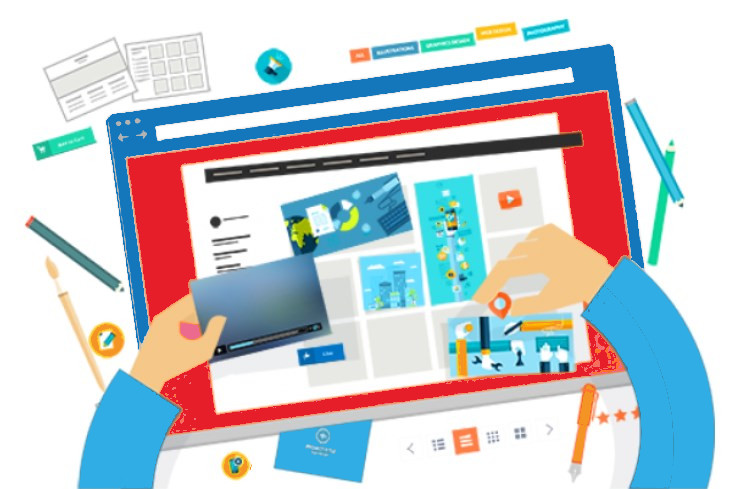
The steps for creating a website for a client
I am in the web business, but I’m still impressed with the astronomical numbers in this area.
According to the website internetlivestats.com, which presents the internet figures live, there are at the time of writing this article (June 30, 2020 at 9 a.m.), 1 781 635 076 websites online. Obviously by the time you read this article this figure will have increased.
The online websites are the only website creation projects that succeed, there are many projects that have not arrived at the end to put the site online.
A website creation project consists of several steps before going online. And he can fail long before he reaches that ultimate stage, and joins 1,781,635,076 websites.
What are the steps for creating a website for a client. This article, answers this question, to prepare you before embarking on a website creation project.
He presents the case of a WordPress website, but this remains valid for other CMS like Joomla, Drupal …
Multimedia content to convey the message
The goal of a website is to get a message out first. And then create a communication channel with the recipients (customers, members, fans, users…). Above all, it is essential to bring together the content resources to convey this message.
At a minimum, the texts and images must be prepared to illustrate the point. subsequently the content can be enriched with video, sound, animations….
This initial content is useful for first defining the lines of the graphic designs of the site. And second, make sure there is consistency between the goal, content and design.
The text will be the trigger for the design of the site’s graphic charter, color, font, background …
Graphic models
As mentioned in the previous paragraph, the content and its message will trigger the design of the website.
We can identify the different types of page, and build a model for each type:
- Home page
- Contact page
- Article
- List of articles
- Landing page
- Products List
- Product sheet
- …
for each model we must define the location of the texts, images, the hierarchy of titles, the font, the colors … as well as the location of the menus and the navigation logic between the different pages of the website.
Integration of models in HTML and CSS
Integration is the conversion of graphic models into code. In the website creation project team, it is the integrator who builds the styles and graphical interactions for the user: navigation menus, pop-ups, banners …
For the paragraphs, the hierarchy of titles and the different types of image, table, video content … the integrator uses the HTML code. To set the font styles, colors, background colors … it will rely on CSS stylesheets. If there is a need for a calculation or logic function it uses Javascript.
Creation of the WordPress theme
Once the HTML mockups are integrated, we can move on to the WordPress development stage!
WordPress installation
One of the prerequisites for this step is to have a web server with a database.
WordPress in its open-source version is a free downloadable website creation tool. To install WordPress you have to download the files from the official site and send them to your web server, most often by FTP software. Once the files are online, an installation interface will guide you step by step.
Theme development
One of the steps in creating a website is developing the theme. Only a few files are required for creating a WordPress theme, a basic theme can consist of just an index.php file and a style.css file
In fact, a wordpress theme is composed of several files and folders necessary for the implementation of WordPress features. (example: the functions.php file).
The goal of WordPress theme development is to make previously created HTML elements editable by the administration part (also called Back Office). Once the theme has been developed, the user, depending on his role, will be able to create or modify pages, modify navigation menus, change images. Many customization possibilities are possible if they have been thought out upstream, during the mock-up phase for example.
To learn more about WordPress site customization.
During the theme creation stage, the content may still be non-final.
Installation and configuration of WordPress plugins
Apart from the theme, another essential component of WordPress is the system of extensions (or plug-ins) to make this website creation tool extensible by adding a wide variety of features. A seasoned professional will guide you through this jungle and offer you useful WordPress plugins or those that are just essential for your project.
Of course, it is not enough to install and then activate a plugin for it to work, very often you have to go through an option page allowing more or less detailed configuration of the plugin.
Also note that depending on the needs of a project, it is possible to create extensions yourself. This is what I recommend in the event that a particular feature should continue to work even if you change the theme later.
Tests, validations & insertion of final content
There you have it, the theme’s graphics are created, and at this stage the functionalities have been tested and the site is technically functional.
All that remains is to insert the final contents, validated texts and photos without trademark.
The next step will of course be uploading to the server and setting up backup and maintenance routines, but that will be the subject of other articles.
The Wedigitalpro web agency has the experts and the tools to design, create, put into production and supervise the websites of very demanding clients.
Wedigitalpro offers to support you. Contact us to study your needs.
